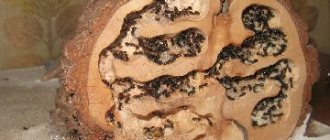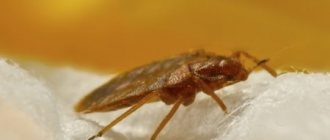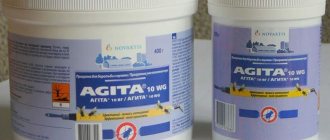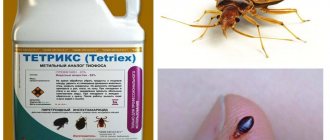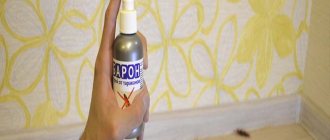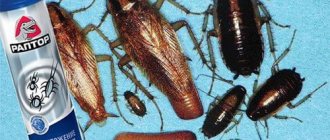Spiders are incredibly fascinating creatures to study. Spiders have unique glands that allow them to “spin” thin and strong fiber, whose properties we successfully study and use for our own benefit: as a model for the development of new materials and as raw material for fabric. House spiders benefit us by keeping our homes free of insects. What else can these little creatures, which are undeservedly notorious among arachnophobes, do? Find out now!
Tarantula Christine Trewer / Pixabay
Nutrition
As mentioned above, the main dish of spiders is insects. But the eating process itself is of greater interest, because digestion occurs outside the intestines. The meal can take from 1 to 3 hours.
By piercing the caught prey with chelicerae, the spider injects digestive juice into it in portions, which is produced by the labial glands and liver. It dissolves all soft tissue, leaving hair, bones and chitinous cover. These same chelicerae cause damage, as a result of which the ready-to-use “cocktail” comes out. Like the movements of a cat's tongue, the spider eats it with the help of the muscular rostrum, and then repeats the actions, turning the victim on the other side.
What happens to your body if you are bitten by a tarantula?
Tarantulas, in truth, have a terrible reputation—literally. They're big, furry, and menacing-looking, which is why horror movie directors love them. Using a clever combination of arachnophobia and computer-generated special effects, they've been passing off spiders as monsters for decades. As a result, a myth about the special poisonousness and danger of tarantula spiders spread across the planet.
In fact, a tarantula bite is no more dangerous than a bee sting. Yes, it’s unpleasant: pain, redness, burning, a possible allergic reaction - all that, but no worse. And tarantulas that are kept as pets do not bite at all. In general, the reputation of these large furry creatures has suffered from their spectacular appearance, but this is not their fault at all.
***
How do spiders weave webs?
The web is the most valuable material of arachnids, because with its help they hunt, move, protect themselves, reproduce, weave nests and much more. The arachnoid glands are located in the lower part of the abdomen, and, if necessary, produce a liquid secretion. Coming out through special channels - arachnoid warts, it hardens and turns into a thread, the stickiness and strength of which is determined by the nervous system.
Additional Information! The web of the Brazilian tarantula is so strong that it is used by fishermen to create nets and catch fish.
The shape and size of the web may vary depending on the species, but they are always woven at night, since at this time the conditions are most comfortable. To attach the thread, the spider touches the support with its warts and then pulls it in the desired direction. Moreover, he himself does not stick to it thanks to the fibers on his paws.
How to walk without muscles in your legs? Ask the spiders
Spiders have very thin long legs that have no muscles. The spider controls them using a complex hydraulic system based on blood pressure. When a spider dies, its legs curl into a ball as the hydraulics stop working.
Photo: Josch13/Pixabay
***
***
Safe
The word “safe” means that their bite has not yet caused death. However, it can be painful, cause allergic reactions and be accompanied by swelling, since most spiders still contain poison, although not very toxic.
For people suffering from arachnophobia, their appearance is especially dangerous. Thus, the tarantula grows up to 27 cm in length, has an eerie palette and thick hair, but despite this, exotic lovers see it as an excellent pet.
House spider
From the name it is clear that this species lives near people - in gardens, rotten trees, houses, apartments, warehouses and other premises. Its size is 1-2 cm, and its color is different shades of brown. Rarely does anyone manage to see a web, since it is only several times larger than the individual and is located in dark, secluded places.
This representative feeds on insects and, thanks to its powerful paws, often catches them with lightning-fast attacks. For them, a poisonous bite is fatal, but a person will only feel pain for a couple of hours, so it is absolutely safe. There is a sign that the spider settles in the apartment where peace, tranquility and love reign, so it is only scary in appearance.
South Russian tarantula (mizgir)
It lives in deserts, forest-steppe zones and in places where there is little moisture, and lives most of the time in its burrow. Representatives can grow up to 3 cm, and in appearance and structure they are similar to other tarantulas. The diet consists of insects, but if there is a shortage of food, it may include larger targets - frogs, mice, and other spiders.
Mizgir is also considered safe for people and pets, however, its poison does not cause the most pleasant sensations. The bite site may hurt for 1 to 3 days, while it swells and turns yellow for several months. Often the victim's temperature rises and vomits.
Horse
The dimensions of the jumping spider often do not exceed 10 mm. According to the description, this is a small, nimble spider that can be found anywhere. Due to its tiny body, it eats exclusively insects, and avoids humans even if protected, since it is unable to bite through the skin. “Horses” received this nickname due to their powerful jumps of up to 20 cm.
Their limbs have a special structure and can expand or contract simultaneously with the pressure inside the body. The 8 eyes located around their heads help them calculate the trajectory and distance to the target, and jumps are always made with a safety thread. They can be of different colors - white, blue, yellow, black, because the family has about 5,000 species.
Additional Information! There is a flower spider that belongs to the sidewalker family. You can find it in the flower of some plant, and it got its name for its incredible ability to move sideways.
Argiope Brünnich garden
Despite such a complex name, everyone has seen this spider, because it has a specific color on its back and is somewhat reminiscent of a wasp. This representative belongs to the orb weaver breed, so it is often found sitting on a large round web with its limbs arranged in the shape of the letter X.
Argiope's list of enemies includes everything that falls into the web, even the human hand. There have already been similar cases, but since its poison is weak, no deaths have been recorded. The reproduction of these representatives is much more interesting. Immediately after mating, the female eats the male, and she dies as soon as she lays eggs in cocoons. Thus, the offspring obviously remain without parents and develop independently.
Wolf spider: appearance
The size of the spider usually varies between 10-35 mm. The color is predominantly dark, brown, gray or black. Light-colored individuals are noticeably less common. There may be streaks. The coloring of a wolf spider directly depends on its habitat, since the spider protects itself from predators by merging with its surrounding habitat. If you are looking for more wolf spider photos, you can find them below in this article.
Most species have 8 eyes, which are arranged in three rows: the first row (lower) consists of four small eyes, the second (middle) - of two large ones, and the third row (upper) - of two eyes located on the sides and slightly above from middle eyes.
Sexual dimorphism is quite developed. You can distinguish a male from a female by the following characteristics:
- males are noticeably smaller;
- females have a lighter and brighter color;
- The forelimbs of males are more developed.
Poisonous spiders
Arachnids are considered poisonous, whose venom can harm the body of humans or large animals. Their number may include representatives who have not had a single human death, but at the same time they are potentially dangerous.
Cross
Crossworts belong to a variety of orb weavers and there are about 600 species. Some of them are found in the CIS countries and are comparable in toxicity to harmless spiders. But the consequences of a bite can be more disastrous, with the manifestation of tissue necrosis.
The size of the crosses ranges from 2 to 4 cm, and the color and pattern depend on the type. But there is one feature common to most representatives - a large and round abdomen. For their own safety, they hide during the day and hunt at night, while feeling hungry very often.
Additional Information! Orb weavers' webs often catch prey that they are unwilling or unable to handle. In this case, the hunter independently frees and releases the victim.
Tramp
One of the most dangerous arthropods of the “runners” family, there are only 8 representatives in their order. The most famous is the Brazilian wandering spider, which in 2010 was recognized as the record holder for toxicity. They do not weave webs, do not build permanent shelters, and at the same time they are wary of people.
This arachnid loves the tropics and lives in Brazil, Mexico, Australia and other places with a similar climate. It reaches 10 cm in size, so it can easily eat not only ticks or insects, but also rodents and birds, killing them with a strong neurotoxic poison. It hunts only in direct line of sight, camouflaging itself on the ground - see photo below.
Among the “vagrants” there is also a safe species, found in Russia, in particular, the Urals, Siberia, and the Volga region. It is somewhat similar to a large house spider and can also live near people. Its venom does not contain a powerful neurotoxin, since the latter is produced only in tropical climates favorable to them.
Why you shouldn't kill house spiders
Photo: SplitShire / Pixabay
We all have spiders in our houses, nothing can be done about it. Perhaps this fact is unpleasant for some or even causes a phobia, but in fact, house spiders are completely harmless to humans. But they are effective killers of domestic insects.
Spiders act quickly and quietly. Cellar spiders prevent woodlice and other moisture lovers from entering apartments. Spiders hiding in ventilation prey on midges and mosquitoes. And those that live under the ceiling save us from fat buzzing flies.
At the same time, house spiders are not aggressive towards people and do their best to avoid meeting us. Unlike annoying insects, spiders do not require anything from us: they are our little helpers, the “orderlies” of our homes. Therefore, even if you catch a house spider and want to get rid of it, do not kill it, but simply release it outside. The spider will find a new home and will benefit someone.
***
***
Deadly poisonous spiders
Among the many arthropods, there are those that you should not approach. The danger to humans is not the animal itself, but the injected poison and, most importantly, its quantity. This is why some people easily tolerate the bite, while others experience complications, even death.
Brown recluse spider
Along with the Karakurts, the brown hermit is considered one of the most poisonous arachnids. Its bite causes necrosis of the skin and tissue, and with a large dose of poison it can lead to death with a 10% probability. The main danger lies in its inconspicuous appearance and small size - no more than 4 cm. The color is dark or light brown, depending on age and gender - see the picture below.
South America is considered the homeland of this species, but it also lives in Australia and Africa. It prefers to rest during the day, as it does not like sunlight, and at night it hunts small insects. What is surprising is that a hermit can exist for a long time without food. In addition, it is long-lived (up to 5 years) and reproduces quickly without subsequently eating its partner. Several matings may occur per year.
Precautionary measures
As we have already said, the spider is safe for humans and will not cause harm to them. But still, if it bites, it is better to disinfect the area.
In general, you should not forget that most arthropods attack a person only if they are in danger, so behave calmly around the spider, do not grab it or make sudden movements.
Important! If you had to meet a really dangerous spider, and this meeting ended in a bite, immediately contact the nearest hospital.
Danger to humans
As mentioned above, the substance injected by spiders causes the greatest harm to the body. Their poison glands produce 2 types of poison:
- neurotoxic - affects the nervous system, muscles, heart and internal organs;
- necrotic - causes cell death.
In order to cause serious harm to the body, an impressive portion of poison and a weakened immune system are required. With this combination of circumstances, paralysis may occur, the heart rate may become erratic and the limbs may go numb.
Why do spiders have hairy legs?
Nature thought that giving spiders hairy legs was a very elegant solution. Increased hairiness would be an unremarkable feature if not for the number of functions performed by the hairs. These creatures do not have a nose, ears or tongue, but they can hear and feel. And all this thanks to my legs, or rather the hairs on them.
It sounds incredible, but that's exactly what it is: hairs enable spiders to hear. This is evidenced by the results of the study. Before arachnologist Paul Shamble's research, spiders were thought to be limited to touch, smell and vision. Now it has become clear that these animals’ picture of the world is much more complete - thanks to the information received from the world of sounds. Sound vibrations are picked up by hairs on the front pair of limbs, scientists wet them, and then the spiders’ nervous system stopped being excited when the sound was made.
In addition to the organ of hearing, hairs are also an organ of touch. They provide information that the creature is being touched by someone or something. By the way, human hairs on the arms and legs perform a similar function. Go ahead. Spider hairs are also the smelling organ of these creatures and at the same time their tongue. Some species use hairs to better grip smooth surfaces.
***
***
Natural enemies of spiders
Considering that arachnids hunt each other, they are considered their own enemies. Frogs, birds, lizards, snakes, wasps, colonies of ants, and various rodents also like to eat them. Moreover, in some countries their main enemy is considered to be humans! So, for Indians, Australians, and Chinese, arthropods are a local delicacy.
Spiders are very specific animals with an interesting lifestyle. Their livelihoods are based on cruel laws, where the strongest survive and sacrifice themselves for the sake of their offspring. This miracle of nature is not a parasite and, despite its poisonous status, is absolutely harmless, because it attacks only in case of self-defense.
Distribution and habitats
Spiders can even live where other living things cannot. They are distributed on all continents and islands, with the exception of areas covered with ice all year round. The vast majority of spiders build burrows, nests and other shelters, but some species do not have a permanent habitat.
The web is needed for insurance
Jumping spiders use web threads to attack. They attach a safety thread to an object and jump onto the intended victim. The South Russian tarantula, leaving its hole, pulls behind it a barely noticeable cobweb thread, along which it will always find the entrance to the abandoned shelter. If the insurance breaks, the tarantula is unable to find its hole and goes in search of a new one. Jumping spiders spend the night on web threads attached to the substrate. This is a kind of insurance against predators.
The main task of the web is to catch prey.

